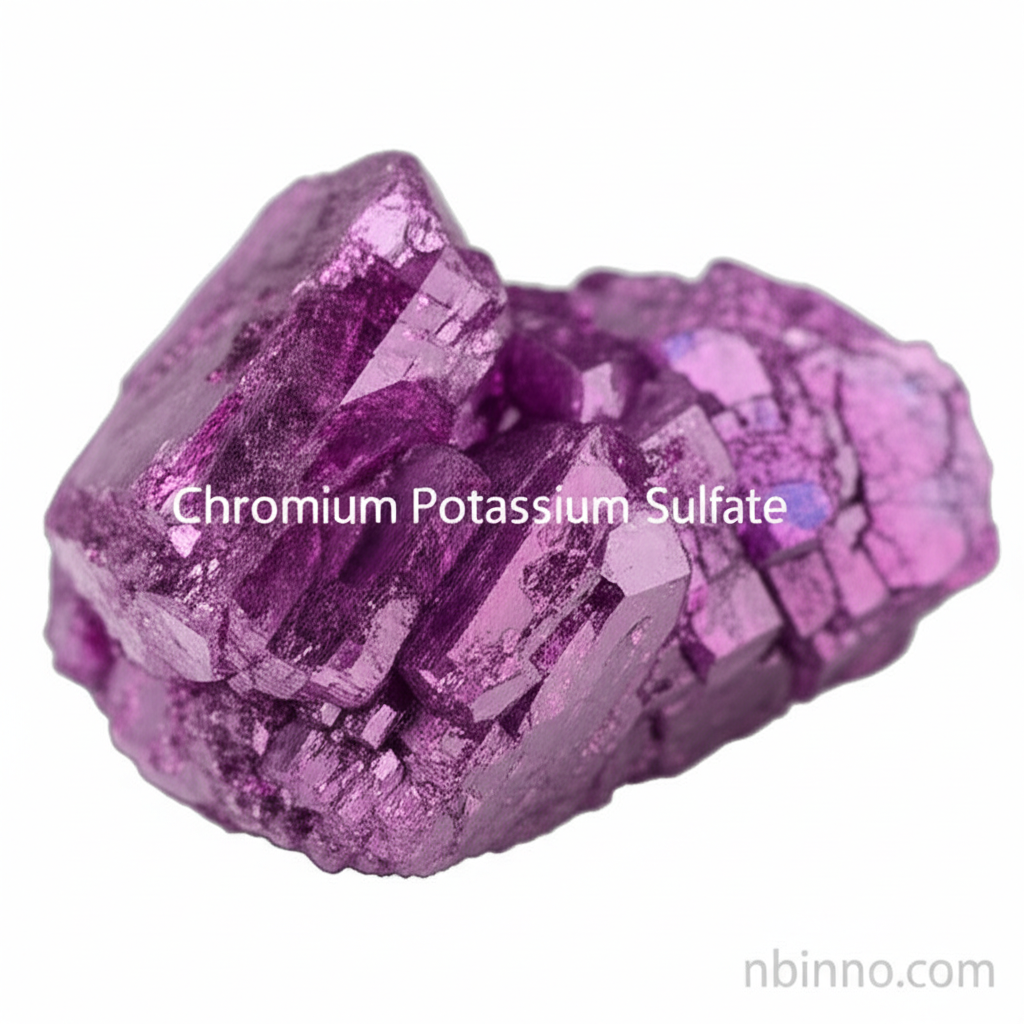Chromium Potassium Sulfate: Properties, Applications, and Safety Guide
Discover the essential properties, diverse industrial applications, and critical safety considerations for Chromium Potassium Sulfate, a vital inorganic compound.
Get a Quote & SampleProduct Core Value

Chromium Potassium Sulfate
Chromium Potassium Sulfate, also known as Chrome Alum, is a critical inorganic compound valued for its unique chemical properties and versatile applications across several industries. As a reliable supplier in China, we provide high-quality Chromium Potassium Sulfate essential for processes like leather tanning and textile dyeing.
- Explore the detailed properties of Chromium Potassium Sulfate, including its chemical formula, KCr(SO4)2·12H2O, and its physical appearance as violet-red crystals.
- Learn about the synthesis methods for Chromium Potassium Sulfate, ensuring purity for your specific industrial needs.
- Understand the key applications of this compound, including its crucial role as a mordant in textile dyeing, enhancing color fastness and vibrancy.
- Discover how Chromium Potassium Sulfate is utilized in leather tanning processes, contributing to the durability and quality of leather goods.
Advantages Offered by Chromium Potassium Sulfate
Enhanced Color Fastness in Textiles
Utilizing Chromium Potassium Sulfate as a mordant in textile dyeing ensures that colors are fixed more effectively, leading to superior color fastness and resistance to fading, a key aspect for high-quality fabrics.
Improved Leather Durability
In the leather tanning industry, Chromium Potassium Sulfate plays a vital role in preserving hides and improving the leather's resistance to heat and moisture, contributing to longer-lasting leather products.
Versatile Crystal Growing Applications
The compound is also recognized for its utility in crystal growing, allowing for the cultivation of unique and colorful crystals, which is a fascinating application of chemical principles.
Key Applications
Leather Tanning
Chromium Potassium Sulfate is a fundamental chemical in the leather industry, improving the stability and preservation of animal hides through the tanning process.
Textile Dyeing
As a mordant, it significantly enhances the bonding of dyes to fabrics, ensuring vibrant and long-lasting colors in various textile applications.
Ceramic Glazes
The compound finds use in the formulation of ceramic glazes, contributing to specific color and finish properties desired in ceramic products.
Crystal Cultivation
It serves as a popular medium for growing striking and aesthetically pleasing crystals, appealing to educational and hobbyist markets alike.
